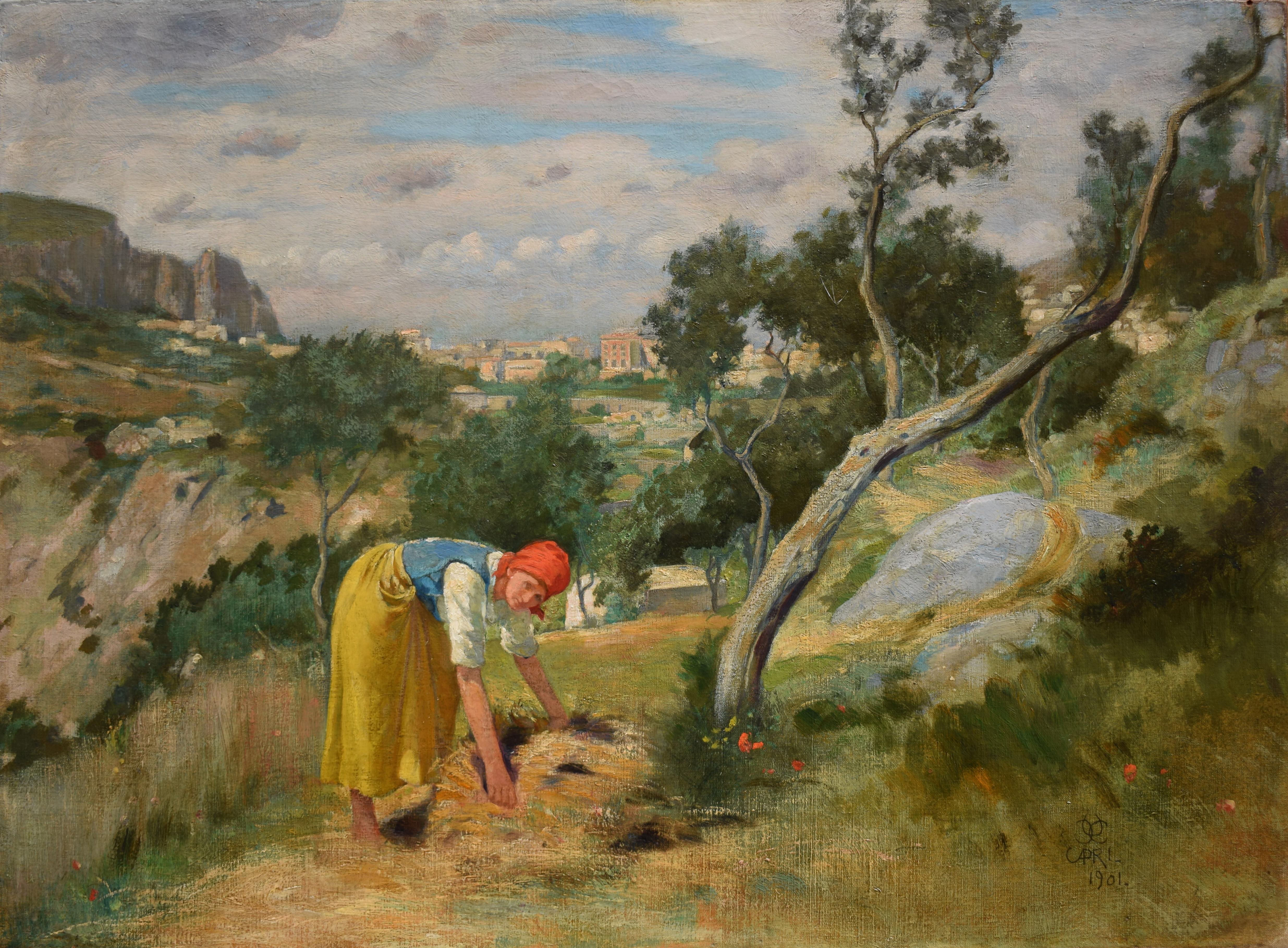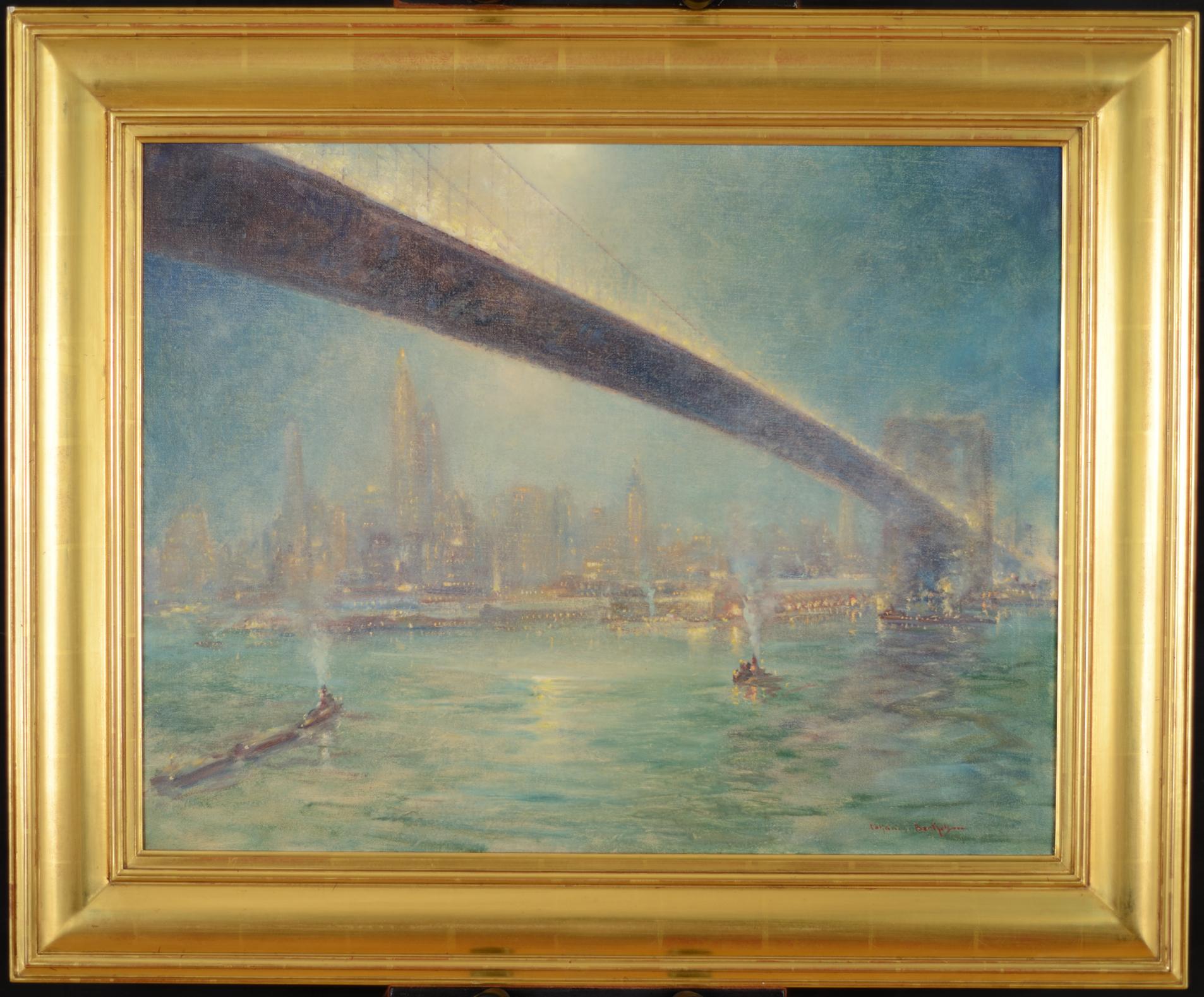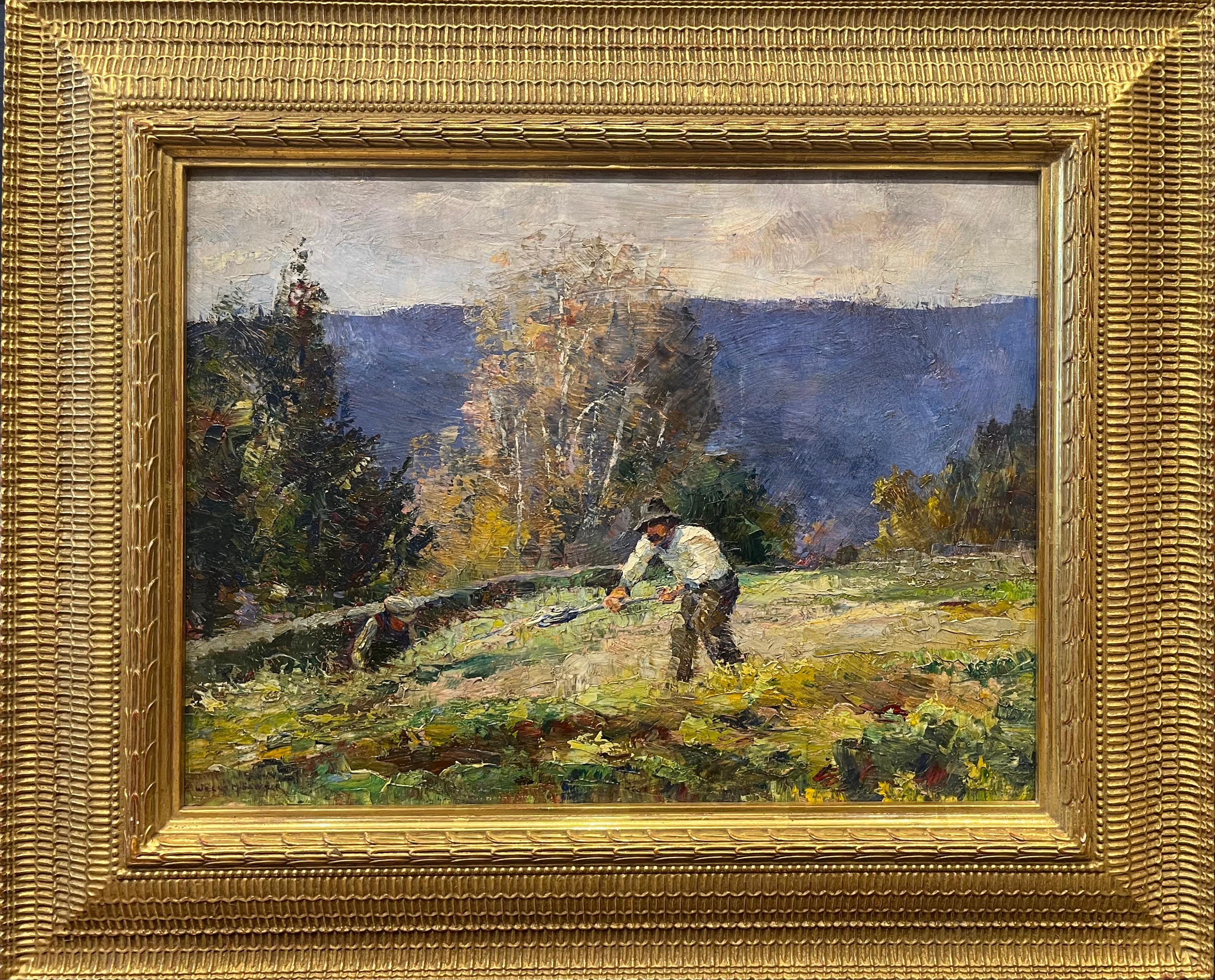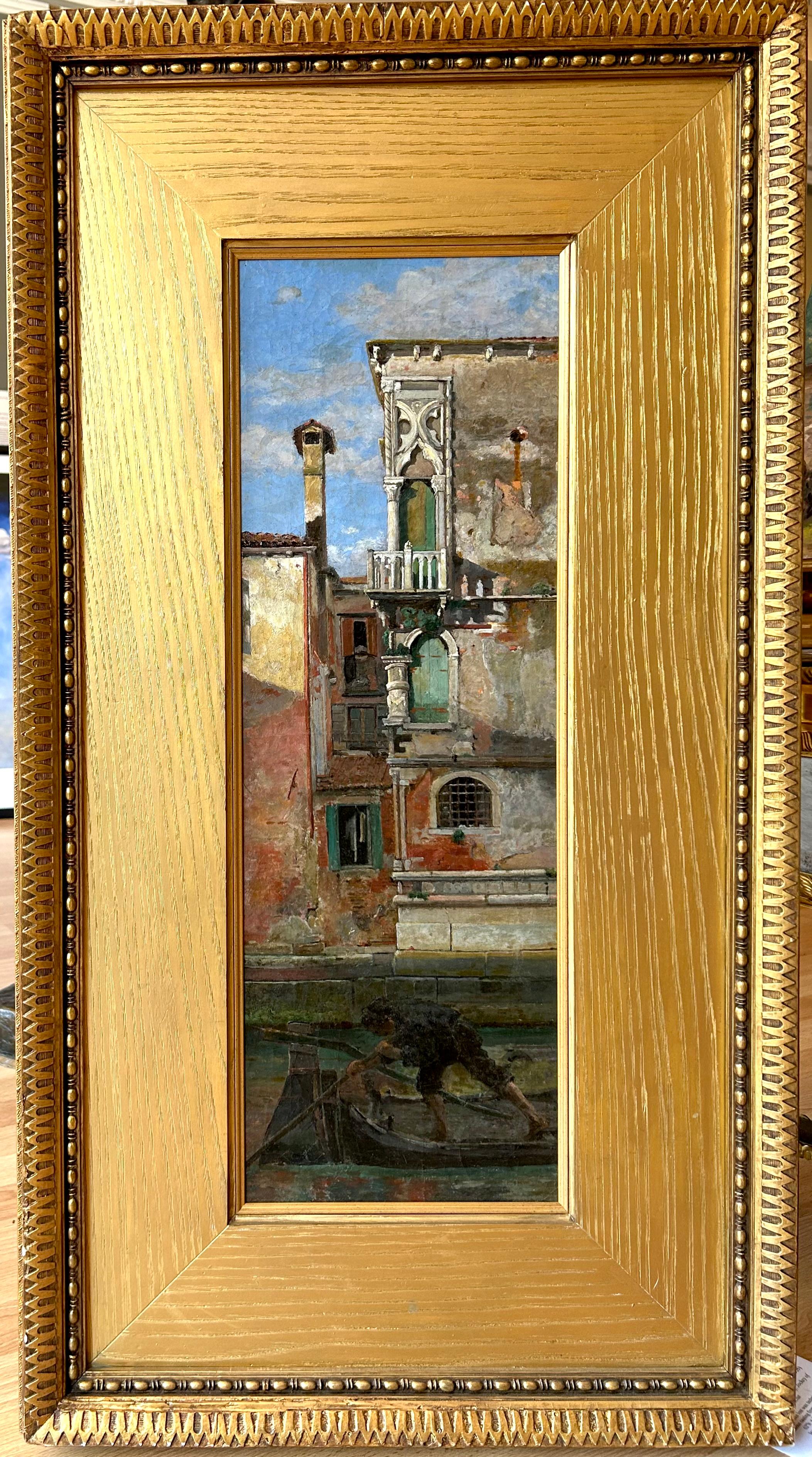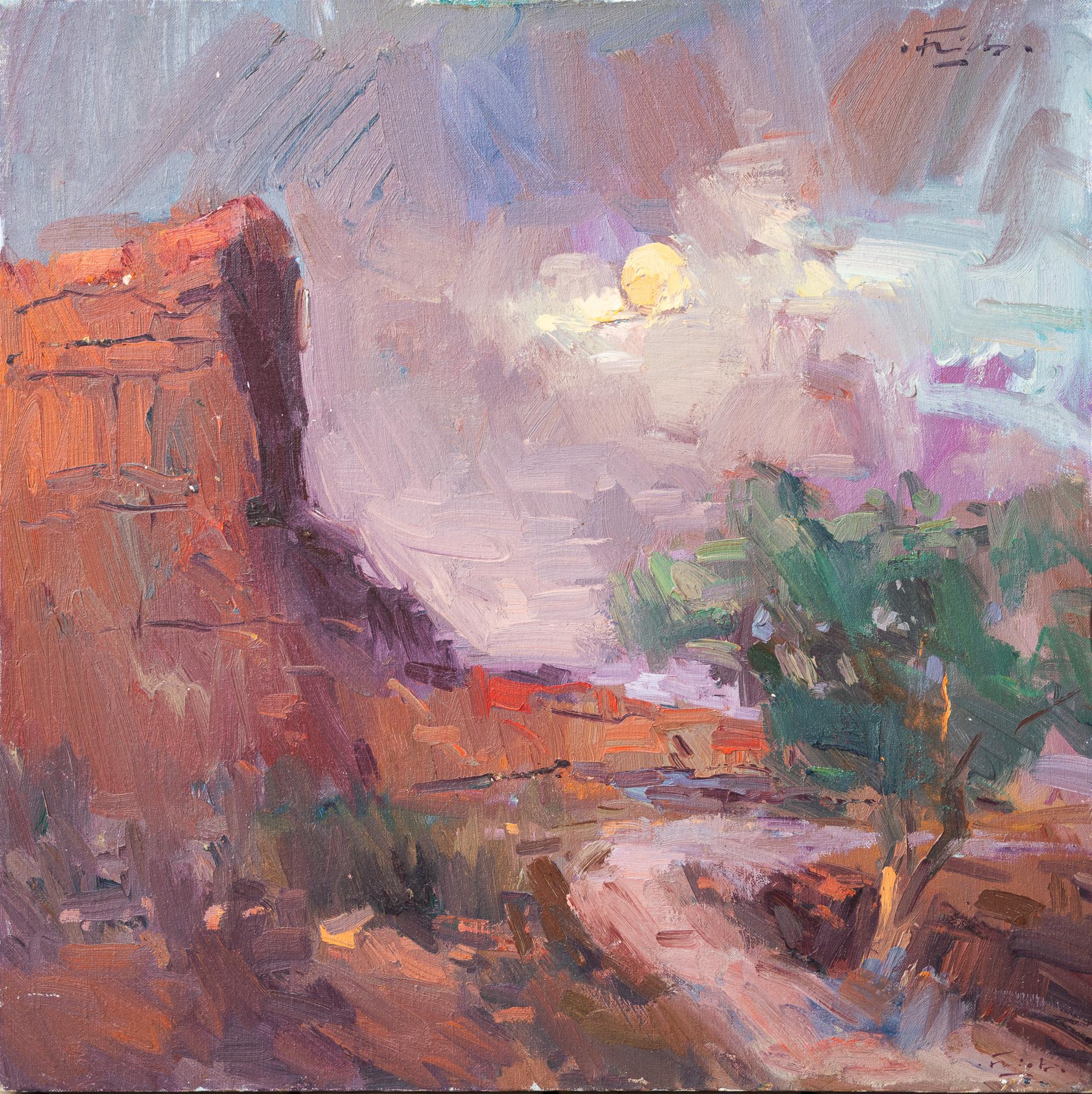Items Similar to "Alley Fiends"
Want more images or videos?
Request additional images or videos from the seller
1 of 4
John R. Grabach"Alley Fiends"Circa 1930
Circa 1930
About the Item
Jim’s of Lambertville is proud to offer this artwork by:
John R. Grabach (1886 - 1981)
John Grabach was a highly regarded New Jersey artist, teacher, and author of the classic text, “How to Draw the Human Figure”. He was born in Massachusetts, and with his widowed mother, moved to Newark, New Jersey when he was eleven.
Starting out as a die-cutter for a silverware firm, Grabach also designed important works of sterling silver hollow ware and Art Deco glass designs for several high end retail manufacturers. He designed United States stamps for the Treasury Department and holiday greeting cards for several firms. Grabach enrolled in courses at the Art Students League in his spare time, studying under George Bridgeman, Frank Dumond, Kenyon Cox, and H. August Schwabe.
Considered a leading figure in the Newark School of Painters, his powerful Ashcan style paintings depicting scenes of New York City and Newark are truly American masterpieces. He captures the expressions and mood of his subjects in those complex compositions on par with any of the highly regarded Ashcan painters of the period. Similar in many ways to his contemporary, George Bellows, Grabach was gifted in portraying the everyday events of working class folks, and translating their ordinary daily routines into something extraordinary to look at.
Whether it be his native blue-collar Newark neighborhood, a crew of gruff dockworkers or something as regular and uninteresting as men eating soup, John Grabach had the ability to turn virtually any subject into appealing and worthy art.
From the 1920s through the 1960s, Grabach was the subject of numerous one-man exhibitions in prestigious galleries and institutions across the country. In 1980, the Smithsonian Institute in Washington, D.C., honored Grabach with a solo retrospective show of his work. This was an unusual tribute for a still living artist.
Grabach was a dedicated and beloved teacher at the Newark School of Industrial Design for many years and among his favorite students was Henry Gasser.
Grabach’s work is in the permanent collections of the Smithsonian, the Corcoran Gallery of Art, the Art Institute of Chicago, and the Philadelphia Art Alliance, among many others.
- Creator:John R. Grabach (1886 - 1981, American)
- Creation Year:Circa 1930
- Dimensions:Height: 52 in (132.08 cm)Width: 58 in (147.32 cm)Depth: 4 in (10.16 cm)
- More Editions & Sizes:Frame Size 52" x 58" x 3"Price: $135,000
- Medium:
- Movement & Style:
- Period:
- Condition:
- Gallery Location:Lambertville, NJ
- Reference Number:
About the Seller
5.0
Vetted Seller
These experienced sellers undergo a comprehensive evaluation by our team of in-house experts.
Established in 1997
1stDibs seller since 2014
36 sales on 1stDibs
Typical response time: 6 hours
- ShippingRetrieving quote...Ships From: Lambertville, NJ
- Return PolicyThis item cannot be returned.
More From This SellerView All
- "Forest Strongholds"By John F. CarlsonLocated in Lambertville, NJSigned lower right. Complemented by a hand carved and gilt frame. Exhibited at the National Academy of Design, 1928Category
20th Century American Impressionist Landscape Paintings
MaterialsCanvas, Oil
- "In Port"By Edward Willis RedfieldLocated in Lambertville, NJJim’s of Lambertville is proud to offer this artwork by: Edward Willis Redfield (1869 - 1965) Edward W. Redfield was born in Bridgeville, Delaware, moving to Philadelphia as a young child. Determined to be an artist from an early age, he studied at the Spring Garden Institute and the Franklin Institute before entering the Pennsylvania Academy from 1887 to 1889, where he studied under Thomas Anshutz, James Kelly, and Thomas Hovenden. Along with his friend and fellow artist, Robert Henri, he traveled abroad in 1889 and studied at the Academie Julian in Paris under William Bouguereau and Tony Robert-Fleury. While in France, Redfield met Elise Deligant, the daughter of an innkeeper, and married in London in 1893. Upon his return to the United States, Redfield and his wife settled in Glenside, Pennsylvania. He remained there until 1898, at which time he moved his family to Center Bridge, a town several miles north of New Hope along the Delaware River. Redfield painted prolifically in the 1890s but it was not until the beginning of the twentieth century that he would develop the bold impressionist style that defined his career. As Redfield’s international reputation spread, many young artists gravitated to New Hope as he was a great inspiration and an iconic role model. Edward Redfield remained in Center Bridge throughout his long life, fathering his six children there. Around 1905 and 1906, Redfield’s style was coming into its own, employing thick vigorous brush strokes tightly woven and layered with a multitude of colors. These large plein-air canvases define the essence of Pennsylvania Impressionism. By 1907, Redfield had perfected his craft and, from this point forward, was creating some of his finest work. Redfield would once again return to France where he painted a small but important body of work between 1907 and 1908. While there, he received an Honorable Mention from the Paris Salon for one of these canvases. In 1910 he was awarded a Gold Medal at the prestigious Buenos Aires Exposition and at the Panama-Pacific Exposition of 1915 in San Francisco, an entire gallery was dedicated for twenty-one of his paintings. Since Redfield painted for Exhibition with the intent to win medals, his best effort often went into his larger paintings. Although he also painted many fine smaller pictures, virtually all of his works were of major award-winning canvas sizes of 38x50 or 50x56 inches. If one were to assign a period of Redfield’s work that was representative of his “best period”, it would have to be from 1907 to 1925. Although he was capable of creating masterpieces though the late 1940s, his style fully matured by 1907 and most work from then through the early twenties was of consistently high quality. In the later 1920s and through the 1930s and 1940s, he was like most other great artists, creating some paintings that were superb examples and others that were of more ordinary quality. Redfield earned an international reputation at a young age, known for accurately recording nature with his canvases and painting virtually all of his work outdoors; Redfield was one of a rare breed. He was regarded as the pioneer of impressionist winter landscape painting in America, having few if any equals. Redfield spent summers in Maine, first at Boothbay Harbor and beginning in the 1920s, on Monhegan Island. There he painted colorful marine and coastal scenes as well as the island’s landscape and fishing shacks. He remained active painting and making Windsor style furniture...Category
Early 1900s American Impressionist Landscape Paintings
MaterialsCanvas, Oil
- “Evening in Newark”By John R. GrabachLocated in Lambertville, NJIllustrated in "New Hope for American Art", pg. 194. Jim’s of Lambertville is proud to offer this artwork by: John R. Grabach (1886 - 1981) John Grabach was a highly regarded New ...Category
20th Century American Impressionist Landscape Paintings
MaterialsCanvas, Oil
- "Solebury Valley"By William Langson LathropLocated in Lambertville, NJSigned lower right. Complemented by a period frame. William L. Lathrop (1859-1938) Deemed “Father of the New Hope Art Colony”, William Langson Lathrop was born in Warren, Illinois. He was largely self-taught, having only studied briefly with William Merritt Chase in 1887, at the Art Students League. Lathrop first moved east in the early 1880s, and took a job at the Photoengraving Company in New York City. While there, he befriended a fellow employee, Henry B. Snell. The two men became lifelong friends and ultimately, both would be considered central figures among the New Hope Art Colony. Lathrop's early years as an artist were ones of continuing struggle. His efforts to break through in the New York art scene seemed futile, so he scraped enough money together to travel to Europe with Henry Snell in1888. There he met and married an English girl, Annie Burt. Upon returning to New York, he tried his hand at etching, making tools from old saw blades...Category
1910s American Impressionist Landscape Paintings
MaterialsCanvas, Oil
- Winter MoonlightBy George William SotterLocated in Lambertville, NJsigned lower rightCategory
1910s American Impressionist Landscape Paintings
MaterialsCanvas, Oil
- "Spring, Oakview"By Antonio Pietro MartinoLocated in Lambertville, NJJim’s of Lambertville is proud to offer this artwork by: Antonio Pietro Martino (1902 - 1988) Signed and dated lower right. Complemented by a period frame. Antonio Martino was ...Category
1920s American Impressionist Landscape Paintings
MaterialsCanvas, Oil
You May Also Like
- Peasant woman at work in the fields of CapriBy Charles Caryl ColemanLocated in Roma, RMCharles Caryl Coleman (Buffalo 1840 – Capri 1928), Peasant woman at work in the fields of Capri (1901) Oil painting on canvas 35 x 49 cm, signed, located and dated Capri 1901 lower ...Category
Early 1900s American Impressionist Landscape Paintings
MaterialsCanvas, Oil
- Bridge Nocturne oil painting by Johann BerthelsenBy Johann Berthelsen, 1883-1972Located in Hudson, NYOne of Johann Berthelsen's iconic nocturne views of New York City across the Hudson River. Bridge Nocturne (c.1945) Oil on canvas, 22" x 28" 29 ½" x 36" x 2" framed Signed "Johann ...Category
1940s American Impressionist Landscape Paintings
MaterialsCanvas, Oil
- Oil Landscape of Man Plowing Field Titled The Garden in AutumnLocated in Fredericksburg, VAThis painting depicts the world famous Untermeyer Garden in Yonkers, New York. Sawyer was an American painter, illustrator, and photographer. He took photographs and made paintings o...Category
Mid-20th Century American Impressionist Landscape Paintings
MaterialsCanvas, Oil
- Oil Landscape of Italy Corner of Piazzo Del CampoBy William GrahamLocated in Fredericksburg, VAThis wonderful oil on canvas landscape was done by the famed William Graham. William Graham was an American landscape painter who spent most of his life and career abroad. He was bor...Category
Late 19th Century American Impressionist Landscape Paintings
MaterialsCanvas, Oil
- Impressionist Italian Landscape of River and VillasBy William ChadwickLocated in Fredericksburg, VAThis landscape of a river with Italian vistas was painted in 1911 by William Chadwick. This was an American artist born in England and lived in Massachusetts. He is famous for his Am...Category
Early 19th Century American Impressionist Landscape Paintings
MaterialsCanvas, Oil
- "Moon Over Monument Valley"Located in Austin, TXAn American Impressionist depiction of a moonlit night in Monument Valley, Arizona. It features a palette of purple, pink, and dark blue. Artist: Guido Frick...Category
21st Century and Contemporary American Impressionist Landscape Paintings
MaterialsCanvas, Oil
